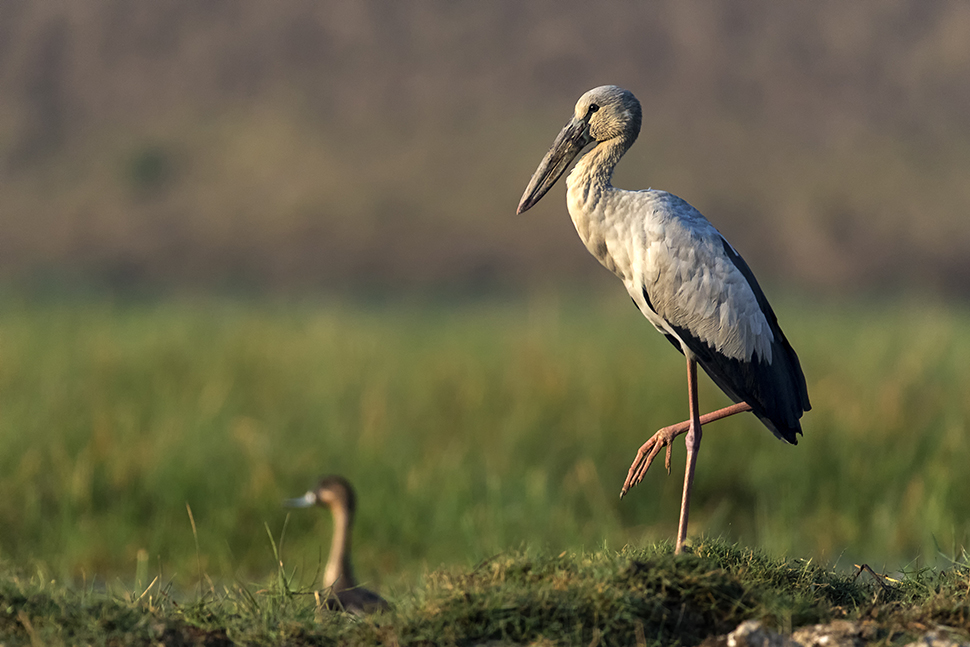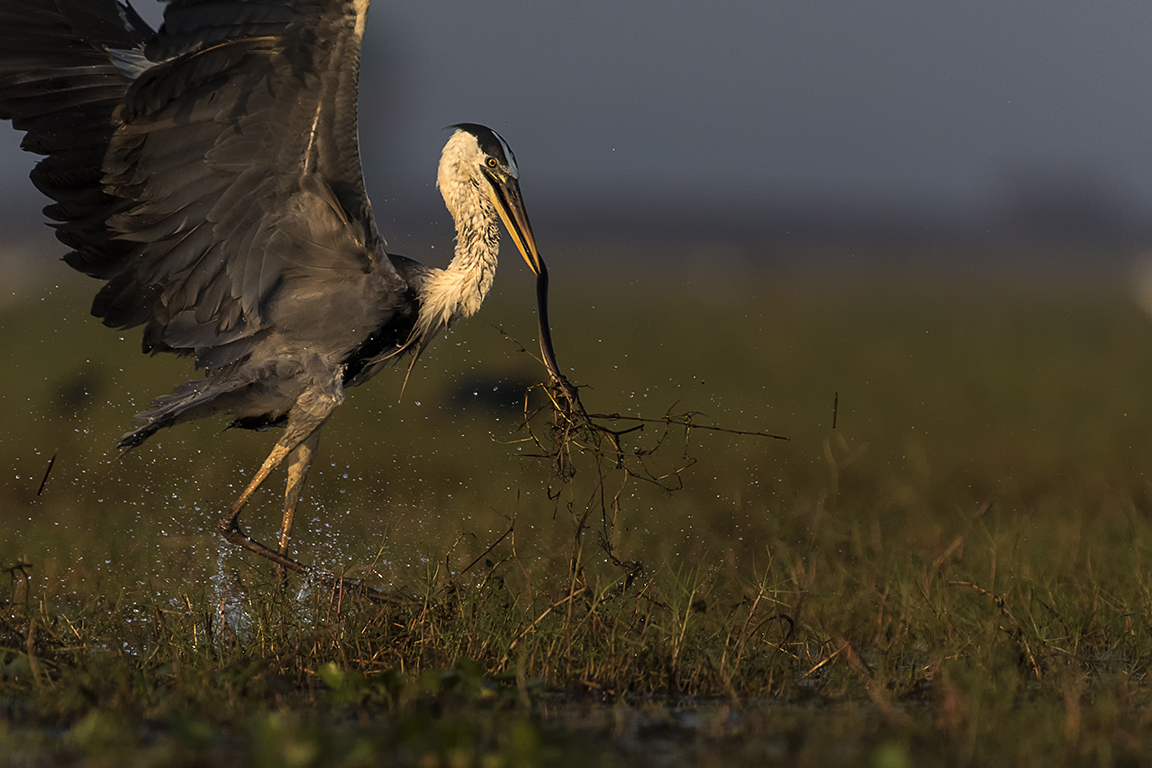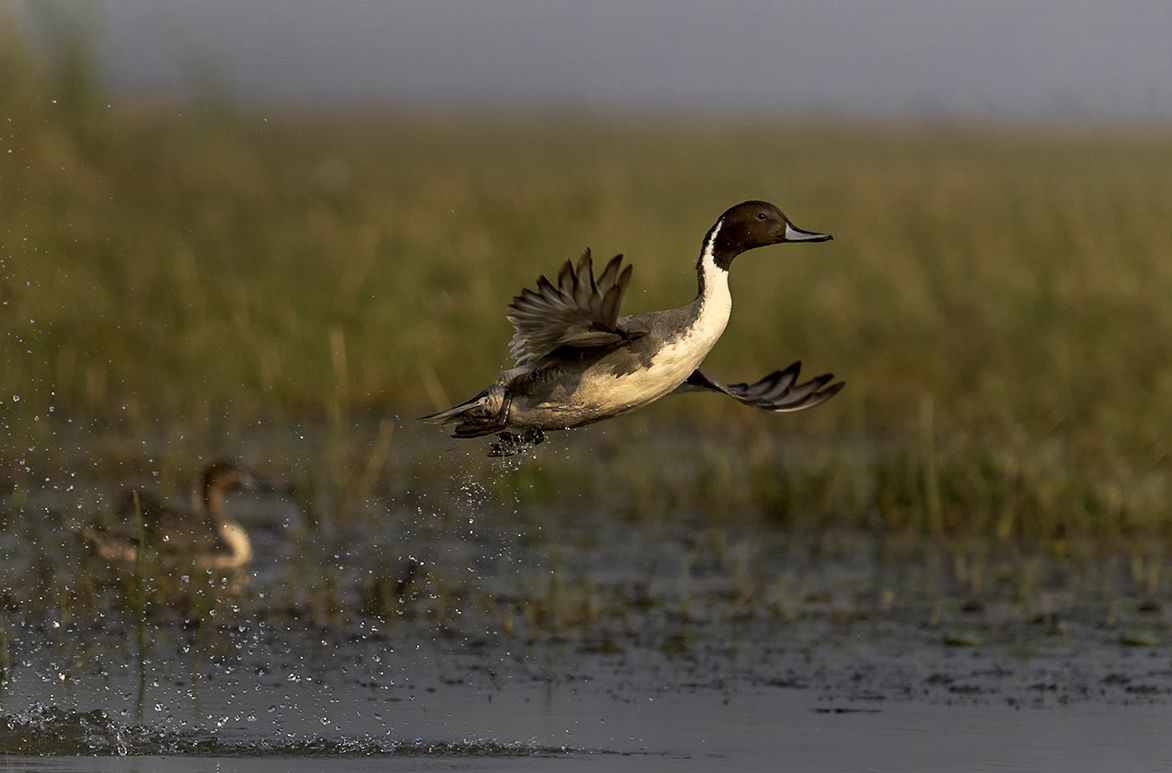Hi people. I got this chance to do field review of Canon 7D Mark IIand I decided to do some bird photography for the same. I went to Bhitarkanika National Park and Mangalajodi wetlands – both in Odisha. In both these places you do bird photography from moving boats and in my opinion these were the best places to test the versatility of Canon 7D Mark II.
Well coming to Canon 7D Mark II, it is one of the most eagerly awaited model because Canon 7D had outlived its shelf life. And with this, Canon just proved that they will continue to offer wide range of options to its consumers. It is Canon’s flagship model in APS-C category with most advanced focusing system.
Before I share my review lets first take a glance at its key specs:
- 20.2 MP Dual-Pixel AF CMOS Sensor
- 10 fps continuous shooting with autofocus
- 65 all cross-type autofocus sensor
- Dual Digic 6 processors
- 150,000 RGB + IR pixel metering sensor
- Enhanced environmental sealing
- Compact Flash (UDMA) and SD (UHS-I) slots
- USB 3.0
- Built-in GPS
- Shutter speeds up to 1/8000th seconds
- Shutter rated to 200,000 cycles
The Built: Canon 7D Mark II more or less looks same as its predecessor 7D but what is important is that the button layout has been changed and is more like Canon 5D Mark III. It feels great in your hand with the grip designed to handle the weight of camera and lens without putting too much stress on your hand. The best part is the addition of “Toggle Switch” which helps you toggle through different AF selection modes simply using your thumb. It is extremely useful control especially for bird and sports photographers where you might need to quickly change the focusing mode without losing a frame.
Sensor: 7D Mark II boasts of a 20.2 MP APS-C CMOS sensor with Canon unique Dual-Pixel AF technology which allows Phase Detection focusing. This unique phase detection covers 80% of the horizontal and vertical parts of the frame.
Focusing System: This is the best part of this new gen camera and great news for bird photographers / sports or action photographers. It has a 65 point auto focus system and all of these points are cross type. Its center AF point is a dual cross type and is designed for high precision focusing even in low light situation. This came in very handy when I was shooting in one of the most challenging conditions in Bhitarkanika. Its is a green mangrove park with entire shooting taking place from moving boats. The birds are always in the thick foliage with tricky low light condition. Since the boat is moving continuously, there is continuous change in the:
– distance between camera and subject
– angle between camera and subject
– light on the subject because of change in angle
And I must admit that this camera performed the task with extreme ease. Very impressive indeed.

This image of Brown Winged Kingfisher along with next image here is one of the sequential images clicked in 10 fps burst . Its evident how the angle and distance between the camera and subject was continuously changing. 7D Mark II managed this tricky situation very well and gave tack sharp images.
Canon 7D Mark II, Canon 200-400 f/4L IS USM Extender 1.4X lens, f/5.6, 1/500, ISO 1250, Exposure Bias -0.3 Step
Like the Canon EOS-1DX and EOS 5D Mark III, there are six customisable shooting scenarios for use in continuous AF mode. These help you tailor the autofocus system to suit the subject by controlling how quickly it should respond to things like changes in subject distance, objects entering the frame and subject acceleration or deceleration.
I’ve found the AF system very fast and accurate even in extreme low light conditions. And, with the right AF point selection mode set it does a great job of keeping up with moving subjects and tracking them around the frame.
The 7D Mark II’s 65 cross-type AF points are capable of detecting both horizontal and vertical detail. This is by far the most advanced focusing system in Canon with only 41 of the 1DX and 61 AF points of 5D Mark III. The ability to detect both types of detail makes for a more robust AF system.
 This image of Brown Winged Kingfisher along with previous image here is one of the sequential images clicked in 10 fps burst. Its evident how the angle and distance between the camera and subject was continuously changing. 7D Mark II managed this tricky situation very well and gave tack sharp images.
This image of Brown Winged Kingfisher along with previous image here is one of the sequential images clicked in 10 fps burst. Its evident how the angle and distance between the camera and subject was continuously changing. 7D Mark II managed this tricky situation very well and gave tack sharp images.
Canon 7D Mark II, Canon 200-400 f/4L IS USM Extender 1.4X lens, f/5.6, 1/1000, ISO 1250, Exposure Bias -0.3 Step
Metering System: This is also one of the finest features of Canon 7D Mark II and the best part is that its metering system is even better than Canon’s flagship camera 1DX. It has a new 150,000 pixel RGB and IR sensor which is divided into 252 zones. I’ve found it does a great job of assessing exposure and it does a better job in high contrast conditions than previous Canon DSLRs.
Apart from advanced and much improved metering system, the RGB + IR sensor is also used for focus tracking in AI servo mode. This is one exciting feature which helped me in click sharp images in ever changing conditions. This is called “Intelligent Tracking and Recognition”.
 Asian Openbill with EXIF: Canon 7D Mark II, Canon 200-400 f/4L IS USM Extender 1.4X lens, f/5.6, 1/3200, ISO 1000, Exposure Bias -0.3 Step
Asian Openbill with EXIF: Canon 7D Mark II, Canon 200-400 f/4L IS USM Extender 1.4X lens, f/5.6, 1/3200, ISO 1000, Exposure Bias -0.3 Step
 This is another image where there was lot of fast action happening when this Grey Heron was trying to kill snake. Bird was continuously moving and so was the boat in which I was sitting. There was continuous change of angle, distance and light but I got the great shot in the end.
This is another image where there was lot of fast action happening when this Grey Heron was trying to kill snake. Bird was continuously moving and so was the boat in which I was sitting. There was continuous change of angle, distance and light but I got the great shot in the end.
Canon 7D Mark II, Canon 200-400 f/4L IS USM Extender 1.4X lens, f/5.6, 1/2500, ISO 1000, Exposure Bias -0.3 Step
ISO and Noise Control: Canon 7D Mark II has many firsts and Programmable ISO is another first and comes as a huge benefit. You can easily customize the way Auto ISO behaves, where you can specify the Auto ISO range (upper and lower limits) as well as the minimum shutter speed the camera will use before increasing the ISO in low light conditions.
Noise is also controlled well throughout the native sensitivity range with considerably better details even on higher ISO range. At ISO 16,000, the top native setting, there is significant improvement in image quality. There’s a noticeable increase in detail resolution and less false colour visible in JPEG files. Though noticeable improvement in High ISO noise but noise in shadow areas is still a concern resulting in less exposure latitude. I personally feel Canon could have done a better job of it.
 Northern Pintail with EXIF: Canon 7D Mark II, Canon 200-400 f/4L IS USM Extender 1.4X lens, f/5.6, 1/8000, ISO 1000, Exposure Bias -1 Step
Northern Pintail with EXIF: Canon 7D Mark II, Canon 200-400 f/4L IS USM Extender 1.4X lens, f/5.6, 1/8000, ISO 1000, Exposure Bias -1 Step
Important additions: It has a built-in Intervelometer (thanks to Canon for finally introducing it), GPS technology, a compass and HDR mode which is compatible with RAW file.
Sorely Missing:
WiFi Connectivity
Touch LCD
Swivel LCD
 Northern Pintails against the setting Sun with EXIF: Canon 7D Mark II, Canon 200-400 f/4L IS USM Extender 1.4X lens, f/5.6, 1/8000, ISO 640, Exposure Bias +0.7 Step
Northern Pintails against the setting Sun with EXIF: Canon 7D Mark II, Canon 200-400 f/4L IS USM Extender 1.4X lens, f/5.6, 1/8000, ISO 640, Exposure Bias +0.7 Step
My Final Notes: I’m really impressed by the EOS 7D Mark II, I think it’s Canon’s best APS-C format camera to date and it is capable of producing superb images. The Canon 7D Mark II is a powerful photography and cinematography tool that professionals can utilize to capture incredible imagery with speed and accuracy. With it’s APS-C, 20 megapixel sensor and dual Digic 6 image processors there’s little this camera can’t do.
With this camera Canon has certainly shown their serious commitment for crop sensor segment. I would rather say that they have taken the soul of 1Dx and packed it in this crop sensor body after making some improvements. This is a pro-level camera with pro-level features, and it performs accordingly.
Here is my final Score on various parameters:
Built Quality: 9/10
Ease of Handling: 9/10
Focusing System: 9/10
Metering: 9/10
Image Quality Low ISO: 8/10
Image Quality High ISO: 7/10
Viewfinder: 8/10
Performance: 8/10
 Asian Openbill with EXIF: Canon 7D Mark II, Canon 200-400 f/4L IS USM Extender 1.4X lens, f/5.6, 1/320, ISO 640, Exposure Bias 0 Step
Asian Openbill with EXIF: Canon 7D Mark II, Canon 200-400 f/4L IS USM Extender 1.4X lens, f/5.6, 1/320, ISO 640, Exposure Bias 0 Step
 Grey Heron Taking Off with EXIF: Canon 7D Mark II, Canon 200-400 f/4L IS USM Extender 1.4X lens, f/5.6, 1/6400, ISO 1000, Exposure Bias -0.3 Step
Grey Heron Taking Off with EXIF: Canon 7D Mark II, Canon 200-400 f/4L IS USM Extender 1.4X lens, f/5.6, 1/6400, ISO 1000, Exposure Bias -0.3 Step
Post By: Jassi Oberai

Jasminder is a Photo Mentor. He is self taught photographer. Though he saw his father pursuing his hobby of photography very seriously and very closely witnessed the dark room secrets, his love for the craft started very late but when it did there was no looking back. As a photographer he does not restrict himself to any particular genre of photography. He likes to shoot mostly anything. He likes the challenge of shooting landscape one day to close up the next and dabbling with portraiture the day after. He loves nature and great use of colors. So in most of his photographs you will see wide use of vibrant colors. In his own words, “Colors can give a whole new look to something rather mundane or something we are used to. To me that’s what I like the most about photography – looking at the world in new ways.”


johan
15 May
thanks for you review, absolutely agree with it. I’ve recently bought the Canon 7d mark ii and love it.
Can you give me some tips in terms of the AF settings. I live in South Africa and love photographing wildlife. We are heading to the masai mara in July and want to make sure I am ready with the AF.
What would you say is the best AF settings for wildlife, would you use one of the set 6 cases and which or do you customise.
Also what would you use for bird photography and what would you use.
Also in terms of shooting what would in your opinion be the highest ISO you would use on the 7d mark ii as I use auto ISO often i am sometimes disappointed with the results when i get back home and view the pics on my computer. 6400 seems too high to use for print.
Much appreciated.
Johan
Sabyasachi Roy
23 February
Very nice photographed..